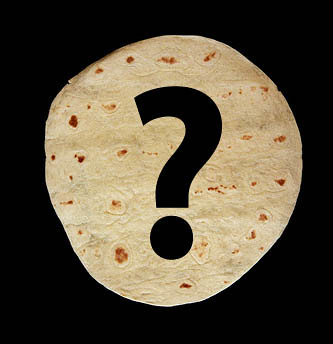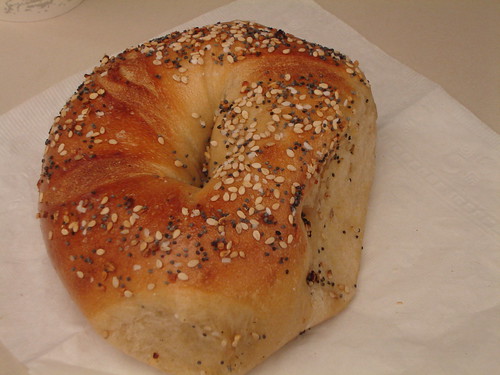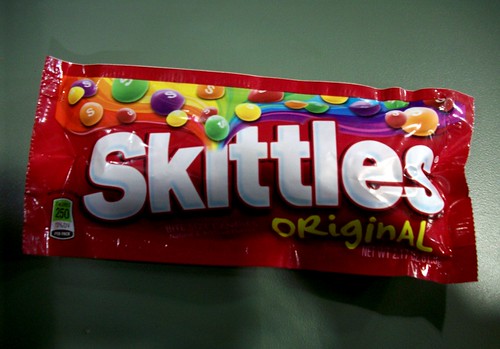Favorite Articles of the Moment
Disclaimer
• Your life and health are your own responsibility.
• Your decisions to act (or not act) based on information or advice anyone provides you—including me—are your own responsibility.
Recent Articles
-
We Win! TIME Magazine Officially Recants (“Eat Butter…Don’t Blame Fat”), And Quotes Me
-
What Is Hunger, and Why Are We Hungry?
J. Stanton’s AHS 2012 Presentation, Including Slides
-
What Is Metabolic Flexibility, and Why Is It Important? J. Stanton’s AHS 2013 Presentation, Including Slides
-
Intermittent Fasting Matters (Sometimes): There Is No Such Thing As A “Calorie” To Your Body, Part VIII
-
Will You Go On A Diet, or Will You Change Your Life?
-
Carbohydrates Matter, At Least At The Low End (There Is No Such Thing As A “Calorie” To Your Body, Part VII)
-
Interview: J. Stanton on the LLVLC show with Jimmy Moore
-
Calorie Cage Match! Sugar (Sucrose) Vs. Protein And Honey (There Is No Such Thing As A “Calorie”, Part VI)
-
Book Review: “The Paleo Manifesto,” by John Durant
-
My AHS 2013 Bibliography Is Online (and, Why You Should Buy An Exercise Physiology Textbook)
-
Can You Really Count Calories? (Part V of “There Is No Such Thing As A Calorie”)
-
Protein Matters: Yet More Peer-Reviewed Evidence That There Is No Such Thing As A “Calorie” To Your Body (Part IV)
-
More Peer-Reviewed Evidence That There Is No Such Thing As A “Calorie” To Your Body
(Part III)
-
The Calorie Paradox: Did Four Rice Chex Make America Fat? (Part II of “There Is No Such Thing As A Calorie”)
-
Interview: J. Stanton on the “Everyday Paleo Life and Fitness” Podcast with Jason Seib
|
(This article is Part III of a series on carbohydrate addiction. Each part stands alone, but I recommend starting with Part I, “Why You’re Addicted To Bread“, as it explains the fundamentals. Part II is here.)
The Mystery of the Flour Tortilla
This article started when I asked a simple question: “Why do flour tortillas have such a low glycemic index?”
The humble flour tortilla tops any list of low glycemic index grain products, with a GI of only 30. Yet whole-wheat bread has a GI of 71! (Source.)
Why is that?
“Complex Carbohydrates”…Not So Complex After All
Most low-fat diet pushers (from Pritikin, to Ornish, to the ADA and US government, to vegan fronts like the PCRM) make a big noise about “complex carbohydrates”. The theory goes like this: Table sugar is made of just two simple sugars, glucose and fructose. That’s bad, because it digests too quickly for our body to use all of it—whereupon the excess is turned into fat, stored as fat, and we’re hungry again. In contrast, the ‘complex carbohydrates’ in whole-grain products are good because they digest more slowly, allowing our body to use all of them. Right?
Wrong.
As described in Part I, whole wheat bread (71) has the same glycemic index as white bread (72), and both of them have a higher GI than white table sugar (62)! This fact alone proves that the theory of “complex carbs” is flawed: our bodies absorb the sugar from that ‘healthy’ whole wheat bread more quickly than…pure table sugar.
Low Glycemic Index: What’s Responsible?
So what’s the real story behind glycemic index? Why do we digest some ‘carbohydrates’ (sugars) so much more slowly than others? And how does a flour tortilla top the list?
Answer: it’s the fat.
- Mexican flour tortillas have a GI of 30, whereas American whole wheat bread has a GI of 72. Remember, you need plenty of lard (or, at least, grain oil) to make a nice, flat, chewy tortilla.
- A plain French baguette has a sky-high glycemic index of 95: spread some butter and jam on it, and the GI declines to 65.
- Cooked white rice has 0.2% fat and a GI of 64; a meal of white boiled rice, grilled hamburger, cheese, and butter has a GI of 24.
- A Pizza Hut Super Supreme pizza (13.2% fat) has a GI of 30, whereas a Vegetarian Supreme (7.8% fat) has a GI of 49.
(Source.)
This is common sense once we think about it for a minute. As anyone who’s taken a freshman nutrition class can tell you, fat inhibits gastric emptying and slows digestion. For example:
Pierre Thouvenot, C Latge, M-H Laurens, and J-M Antoine. Fat and starch gastric emptying rate in humans: a reproducibility study of a double-isotopic technique. Am J Clin Nutr 1994;59(suppl):781S.
Executive Summary: A high-fat mixture of egg yolks, olive oil, and butter left the stomach over 50% slower than spaghetti…and that doesn’t even count the time taken to digest it in the intestine. (Also note that spaghetti has a glycemic index of 38-61, depending on cooking time—much lower than bread or cereal at 70-80.)
In conclusion, the theory of “complex carbs” is a red herring. The primary driver of glycemic index is fat content. The more fat, the slower the sugars (‘carbohydrates’) are digested, and the lower the glycemic index.
(Yes, it is possible to make lower-GI pure carbohydrates: a wheat ‘bread’ containing 80% intact kernels gets down to a GI of 52…just under a Snickers bar at 55. But wait…80% intact kernels? That’s not bread…that’s a cake of birdseed! I’ve never even seen that sold in a store, let alone watched someone actually try to eat it.)
Conclusion: A Low-Fat Diet Means A High Glycemic Index Diet
When we take fat out of our diet and replace it with ‘carbohydrates’ (sugars), the glycemic index of the food we eat goes up dramatically.
This has obvious negative consequences for our health and weight, and I’m going to highlight it, because it’s the key to this article:
High-GI ‘carbohydrates’ (sugars), simple or complex, are digested far more quickly than we can burn them for energy, whereupon our bodies convert them into fat and store them as fat—leaving us hungry, even though we are gaining weight!
Then, we get a transient dopamine rush and subsequent serotonin high before our blood sugar crashes, but that decreases over time as we get fatter—meaning that we are chemically as well as metabolically addicted to sugar (‘carbohydrates’).
Does this situation sound familiar? You’re told to take those ‘unhealthy’ fatty foods out of your diet—and suddenly you’re either hungry and miserable, or you’re gaining weight uncontrollably. Ever wonder why you don’t feel full no matter how many plain bagels, glasses of skim milk, cups of low-fat yogurt, and boxes of fat-free Fig Newtons you eat…yet you still have the compulsion to keep eating?
Even worse, if this vicious cycle of goes on long enough, you become insulin-resistant, and then diabetic. Isn’t this what’s happening to all of America? Our ‘obesity epidemic’ started once we told people to avoid fat at all costs…
…and now you know why. It’s because by removing fat from your diet, you’re turning everything you eat into candy.
Incredible but true fact: a medium Jamba Juice fruit smoothie (‘Berry Lime Sublime’) has substantially more calories (487) than a Quarter Pounder (417)—and a large has almost as many calories (610) as a Double Quarter Pounder (647)!
Which one will leave you feeling like you ate a meal, and which one will leave you still hungry?
 ...than the Quarter Pounder!  This has more calories... But Isn’t Fat Bad For You? Science Says “No.”
We’ve been told for decades that fat and cholesterol are bad, and saturated fat will kill you. That is, stated baldly, a lie.
There is no association between saturated fat intake and heart disease, and there is no association between egg intake (the largest source of dietary cholesterol) and heart disease.
Patty W Siri-Tarino, Qi Sun, Frank B Hu, and Ronald M Krauss. Meta-analysis of prospective cohort studies evaluating the association of saturated fat with cardiovascular disease. Am J Clin Nutr Jan 2010
“A meta-analysis of prospective epidemiologic studies showed that there is no significant evidence for concluding that dietary saturated fat is associated with an increased risk of CHD or CVD.”
[…]
“The pooled relative risk estimates that compared extreme quantiles of saturated fat intake were 1.07 (95% CI: 0.96, 1.19; P = 0.22) for CHD, 0.81 (95% CI: 0.62, 1.05; P = 0.11) for stroke, and 1.00 (95% CI: 0.89, 1.11; P = 0.95) for CVD. Consideration of age, sex, and study quality did not change the results. “
Here’s the layman’s version, from Scientific American:
“Carbs Against Cardio: More Evidence that Refined Carbohydrates, not Fats, Threaten the Heart“, Scientific American, May 2010
“…The quintile of women who ate the most easily digestible and readily absorbed carbohydrates—that is, those with the highest glycemic index—were 47 percent more likely to acquire type 2 diabetes than those in the quintile with the lowest average glycemic-index score.” … “women who were overweight and in the quartile that consumed meals with the highest average glycemic load, a metric that incorporates portion size, were 79 percent more likely to develop coronary vascular disease than overweight women in the lowest quartile.”
“The next time you eat a piece of buttered toast, [Ludwig] says, consider that ‘butter is actually the more healthful component.'”
Moving on to eggs:
Public Health Nutr. 2010 Jul 16:1-10. Egg consumption and CHD and stroke mortality: a prospective study of US adults. Scrafford CG, Tran NL, Barraj LM, Mink PJ.
“We did not find a significant positive association between egg consumption and increased risk of mortality from CHD or stroke in the US population. These results corroborate the findings of previous studies.”
So: eat fatty meats, eat eggs, eat avocados. Cook with butter, tallow, and coconut oil, and perhaps some extra-virgin olive oil for taste. And if you absolutely must eat candy in the form of bread, cereal, or potatoes, eat them with plenty of butter, olive oil, cream, and whole milk.
Sounds a lot better than rice cakes and dry toast, doesn’t it?
Live in freedom, live in beauty.
JS
Postscript: if you want to know how we got bamboozled into believing that foods we’ve eaten for millions of years (meat) were bad for us, but industrial products that didn’t even exist until this century (‘vegetable oil‘) were good for us, you can watch Tom Naughton’s entertaining presentation “Big Fat Fiasco”, available here and on DVD here.
(This is Part III. Go back to Part I, Part II.)
“So what do YOU eat?” you ask. Click here for my classic article “Eat Like A Predator”.
My most recent articles are listed on the left sidebar. Or, click here for an index, organized by topic.
May I suggest subscribing to my RSS feed, or to my newsletter (right sidebar: scroll up)? I update on Tuesdays, sometimes more often.
Did you enjoy this series? Use the buttons below to share it with your friends! And if you want to support gnolls.org, buy my “Funny, provocative, entertaining, fun, insightful” book, The Gnoll Credo. (Read more glowing reviews here, and the first 20 pages here. Outside the USA? Try here.)
(This article is Part II of my carbohydrate addiction series. In order to fully understand it, you should start with Part I, “Why You’re Addicted To Bread“, because it describes the mechanisms of sugar (‘carbohydrate’) addiction—all of which apply equally to breakfast cereal. Part III is here.)
Breakfast Cereal = Skittles
We already know that the glycemic index of both whole wheat and white bread (71-72) equals that of Skittles (70)…but the glycemic index of most breakfast cereals exceeds it. You get the same sugar rush from ‘healthy’, ‘whole grain’ breakfast cereals that you get from candy!
(All figures for North American versions when available, as formulations differ between countries. Also note that differences of + or – 5 points most likely aren’t significant, as measurements vary.)
(Figures from here, here, and here.)
 ...yet a bowl of these will spike your blood sugar less! Yes, ‘healthy’ cereals like Bran Flakes and Grape Nuts spike your blood sugar more quickly than pure white table sugar, and provide a bigger sugar rush. So by dumping sugar on cold cereal, you’re actually decreasing its glycemic index…and Frosted Flakes has the same glycemic index as ‘healthy’ oatmeal!
Would you eat Skittles for breakfast? No? Then why are you eating cold cereal?
Would you eat a Snickers bar for breakfast? No? Then why are you eating oatmeal?
Cereal: Adjacent To This Complete Breakfast!
Yes, cereal has vitamins and minerals, because it’s ‘fortified’—they’re added after the fact. Just eat Skittles and a multivitamin and you’ll get the same result.
“Robert Choate, an adviser to President Nixon on nutrition, told a congressional hearing into breakfast cereals that the majority “fatten but do little to prevent malnutrition”. Choate was outraged at the aggressive targeting of children in breakfast cereal advertising. He analysed 60 well-known cereal brands and concluded that two-thirds offered “empty calories, a term thus far applied to alcohol and sugar”.
Rats fed a diet of ground-up cereal boxes with sugar, milk and raisins were healthier than rats fed the cereals themselves, he testified to senators.”
–Drop That Spoon, The Guardian, November 23, 2010
(Thanks to my friend Bruce for the phrase “Adjacent to this complete breakfast!”)
Cereal: A Triumph Of Marketing
Next time you’re shopping for food, take a moment to notice how expensive cereal is. It’s a triumph of marketing: take wheat or corn that sells for a few dollars a bushel, extrude it into small, crunchy pieces, and sell it for several dollars a pound. I can buy two dozen eggs—or a pound of hamburger, an onion, and a head of garlic—for less than a large box of cereal.
“One of the biggest costs in cereal manufacture is not the value of the ingredients nor the cost of production, but the marketing. About a quarter of the money you spend on breakfast cereal goes on the cost of persuading you to buy it. That still leaves room for gross profit margins on processed cereals that are 40% to 45%.”
–Drop That Spoon
So how did we get snookered into eating expensive empty calories for breakfast? Answer: cereal was invented by religious fundamentalists to destroy your sex drive and keep children from masturbating. Read the complete article “Drop That Spoon” for an eye-opening history.
What should I eat instead?
 A real breakfast. Ham, eggs, veggies...click the picture for recipe and technique. Fortunately, this is an easy problem to solve. Instead of cereal, eat a traditional American breakfast of meat and eggs. Even better, have an omelet, with some hash browns if you must.
Or, just eat eggs. No, they’re not bad for you.
And now: SCIENCE! proves what’s obvious to all of us: you’ll feel less hungry, and you’ll eat less for the rest of the day, after eating eggs for breakfast.
Ratliff et. al. Consuming eggs for breakfast influences plasma glucose and ghrelin, while reducing energy intake during the next 24 hours in adult men. Nutr Res Vol 30, Issue 2, pp. 96-103 (Feb 2010)
“Subjects consumed fewer kilocalories after the EGG breakfast compared with the BAGEL breakfast (P< .01). In addition, subjects consumed more kilocalories in the 24-hour period after the BAGEL compared with the EGG breakfast (P < .05). Based on VAS, subjects were hungrier and less satisfied 3 hours after the BAGEL breakfast compared with the EGG breakfast (P < .01).”
Live in freedom, live in beauty.
JS
Continue to Part III of this series on glycemic index and carbohydrate addiction—”Fat and Glycemic Index: The Myth Of “Complex Carbohydrates”. (Part I is here.)
(This essay is Part I of a series on carbohydrate addiction and the myth of ‘complex carbs’. You can skip to Part II, “Adjacent To This Complete Breakfast!” or Part III, “The Myth Of “Complex Carbohydrates”.)
Why do we crave the empty calories of bread? Answer: for the same reasons we crave the empty calories of candy.
Bread = Skittles
I’ve made the point before that bread—even whole wheat bread—is metabolically equivalent to Skittles, because it has the same glycemic index. You get the same sugar rush from a ‘healthy’ whole wheat bagel that you do from candy…and though it might not taste as sweet, it’s all the same to your digestive and metabolic system.
 Whole-grain bagel: 280-350 calories, glycemic index 72.  Bag of Skittles: 250 calories, glycemic index 70. (Calorie counts: bagel, Skittles. Glycemic index table here.)
A short layman’s explanation for those unfamiliar with food chemistry: “proteins” are just amino acids linked together in chains, and “carbohydrates” are just simple sugars (glucose, fructose, galactose) linked together in chains. When a carbohydrate is small (two simple sugars) and tastes sweet, we call it “sugar”—and when a carbohydrate is big (many simple sugars) and doesn’t taste sweet, we call it “starch”. But it’s all the same thing: “carbs” are just sugar, and your body breaks them all down into simple sugars before using them.
“Glycemic index” is a measure of how quickly the sugar in a food (including starch and other “carbohydrates”) appears in our bloodstream, fully disassembled, after we eat it. The higher the glycemic index, the quicker the sugar hit.
Note that white rice has a higher glycemic index (64) than Coca-Cola (58), and ‘healthy’ breakfast cereals like cornflakes (81) and Grape Nuts (71) have a higher glycemic index than a Snickers bar (55)! Read this list of 100 common foods: you’ll be surprised at which “healthy” foods are really just sugar bombs.
Interestingly, there is no special dietary name for short proteins: they’re all just called “protein”.
(A giant table of glycemic index for thousands of foods can be found here.)
Eating Like Cattle, Getting Fat Like Cattle
We are told to eat lots of ‘carbohydrates’ (sugars) in small meals throughout the day, as recommended by the nutrition industry (the ADA, most Western governments, and other wholly-owned subsidiaries of multinational agribusinesses and drug companies). In other words, we are told to graze—like cattle.
Grazing like a cow means that your bloodstream is always full of sugar. Glucose (a simple sugar) is our body’s primary energy source, and our bodies will always use it first if there is any available. We only start metabolizing fat for energy when there is no sugar left.
Unfortunately, by maintaining such a diet, our ability to metabolize body fat simply atrophies—because it’s never used! This is why dieters feel so desperately hungry, and why it’s hard to reduce ‘carbohydrate’ (= sugar) intake: we’ve got plenty of energy available in the form of body fat, but our body’s ability to metabolize it has atrophied—so we are metabolically starving in the midst of plenty. It’s like having a pantry full of canned tuna and discovering you’ve lost the can opener.
In the scientific literature, the ability to switch back and forth between glycolysis (burning sugar) and beta-oxidation (burning fat) is called “metabolic flexibility“. And while the above paragraph is simplified to avoid dragging my readers into the technical and biochemical details, the adventurous and inquisitive can learn more by viewing my 2013 Ancestral Health Symposium presentation “What Is Metabolic Flexibility, and Why Is It Important?” and the references in its bibliography.
This is the metabolic component of sugar (‘carbohydrate’) addiction.
(See this short cartoon for Tom Naughton’s entertaining layman’s guide to this metabolic catastrophe, which includes Type II diabetes in its end stages. I also recommend watching his full presentation “Big Fat Fiasco”, also available on DVD here.)
The Sugar Rush: Chasing Serotonin and Dopamine
There is a second component to sugar addiction: not only are sugars (‘carbohydrates’) metabolically addictive, they are most likely physically addictive too. Here’s how that works. (You can skip to the summary below if you’re not interested in the details.)
“Carbohydrates, when digested by the body, are effectively broken down into sugar molecules. When these molecules are absorbed and released in the bloodstream, blood concentration of glucose increases. Almost immediately, there will be a significant increase in plasma insulin levels as a result of the pancreas releasing its stored insulin. Insulin then steps in to do what it is genetically programmed to do–it breaks it down some more to produce energy and transport the extra glucose from the blood to the body cells. Insulin also makes it easy for tryptophan to enter the brain by eliminating its other amino acid competitors.”
[…]
“The concentration of the majority of the amino acids, including alanine and glutamine, are significantly reduced each time insulin is secreted. Tryptophan is then able to enter the brain at a higher rate. An increased level of tryptophan in the brain means more available tryptophan for conversion. Tryptophan undergoes hydroxylation to the 5 positions and is converted in 5-HT and eventually to serotonin.” –“Why Carbohydrates Instantly Increase Serotonin Levels”
The science behind this explanation:
PM Lyons and AS Truswell. Serotonin precursor influenced by type of carbohydrate meal in healthy adults. American Journal of Clinical Nutrition, Vol 47, 433-439
In summary: sugar (carbohydrates) boosts brain tryptophan levels, which makes us sleepy. This tryptophan boost increases brain serotonin levels over time, which makes us feel content and satiated (“food coma”). Furthermore, the immediate reward of eating palatable food is a dopamine rush: the same neurotransmitter behind drug highs like cocaine and amphetamine.
(In case you’re not familiar with serotonin: you’ll note that the common antidepressants (Prozac, Zoloft, etc.) are all SSRIs—selective serotonin reuptake inhibitors—which boost serotonin by blocking the body’s ability to reabsorb it.)
The problem is that, like any other addictive drug, the positive effects of bread (and other high-sugar foods) diminish over time—while the addiction remains.
The Journal of Neuroscience, September 29, 2010, 30(39):13105-13109. Weight Gain Is Associated with Reduced Striatal Response to Palatable Food. Eric Stice, Sonja Yokum, Kenneth Blum, and Cara Bohon
“Results indicated that women who gained weight over a 6 month period showed a reduction in striatal response to palatable food consumption relative to weight-stable women. Collectively, results suggest that low sensitivity of reward circuitry increases risk for overeating and that this overeating may further attenuate responsivity of reward circuitry in a feedforward process.”
Rephrased in simple language: the fatter you get, the less of a good feeling you get from eating tasty foods. (And here’s some rat science on striatal dopamine receptors, for those curious about the mechanisms.)
So we eat more and more ‘carbs’ (sugar) in an effort to recreate that dopamine rush and subsequent serotonin contentment…but as we gain weight, we get less and less of that reward. All we get is the sugar spike and subsequent metabolic crash.
Interestingly, alcohol apparently has a similar mechanism of addiction: it increases serotonin nerve activity, but depletes actual brain serotonin. See: Adv Exp Med Biol. 1999;467:265-74. Tryptophan metabolism in alcoholism. Badawy AA. And it is perhaps not a coincidence that women with a family history of alcoholism are more likely to be obese.
Further Reading (optional):
Carbohydrate craving: a double-blind, placebo-controlled test of the self-medication hypothesis. Corsica JA, Spring BJ. Eat Behav. 2008 Dec;9(4):447-54.
Psychobiological effects of carbohydrates. Spring B, Chiodo J, Harden M, Bourgeois MJ, Mason JD, Lutherer L. J Clin Psychiatry 1989 May;50 Suppl:27-33
The effect of carbohydrates on affect. Larry Christensen, PhD. Nutrition Volume 13, Issue 6, Pages 503-514 (June 1997)
“…Carbohydrate consumption is relevant for individuals experiencing symptoms of emotional distress, particularly symptoms indicative of depression, and that the individuals with depressive symptoms show a preference for sweet simple carbohydrates.”
Summary
In summary, carbohydrates are addictive in two ways, both factually established:
- First, because they’re really just sugar, and we get the same sugar rush from bread that we get from candy.
- Second, because sugar pumps up dopamine and serotonin levels in the short-term—but, like any addictive drug, the reward diminishes over time, while the compulsion to eat ‘carbohydrates’ (sugar) remains.
Breaking Our Bread Addiction
So how do we break our bread addiction?
There is good news! My experience, and that of most people attempting a paleo diet (which is ‘low-carb’, or low-sugar, by definition, unless you’re making a concerted effort to eat potatoes), is that you can indeed regain your ability to burn body fat for energy—and once you’re ingesting enough protein and B vitamins, your serotonin levels won’t be completely dependent on eating sugar. (Eat more meat and eggs.) The relentless sugar cravings slowly dissipate over a couple weeks.
You’ll find that not only do you not crave huge piles of empty sugar calories (bread, pasta, potatoes) with meals—as a bonus, you’ll find that it’s suddenly much easier to go without food entirely, because your body is learning how to burn fat again! You’ll be able to skip a meal without feeling like you’re going to die of hunger…and you’ll also discover that being a little bit hungry substantially boosts your mental capacities due to the action of ghrelin, once you’re no longer distracted by hunger pangs.
Though I can’t find any human studies (since it’s difficult to measure brain tryptophan and serotonin levels without dissecting the brain), there is suggestive evidence from animal studies that fasting raises brain serotonin:
Changes in brain serotonin metabolism associated with fasting and satiation in rats. J. Pérez-Cruet, A. Tagliamonte, P. Tagliamonte and G. L. Gessa. Life Sciences Volume 11, Issue 1, Part 2, 8 January 1972, Pages 31-39
“The synthesis rate of brain serotonin was about 30% lower in rats fed for two hours than in rats fasted for 24 hours.”
Also see Br J Pharmacol. 1984 October; 83(2): 357–362. The effect of fasting on 5-hydroxytryptamine metabolism in brain regions of the albino rat. L. D. Fuenmayor and S. García. [Note: 5-hydroxytryptamine = serotonin.]
There are still unanswered questions here: how long do we have to go between meals to produce a rise in serotonin? (It might happen after an hour, three hours, or twenty hours.) Is abstaining from sugars (‘carbs’) sufficient, or must one fast altogether? More research is needed here: if you know of any that I’ve missed, please leave a comment.
My non-scientific advice is: don’t try to go cold turkey, but do make a strong effort to replace sugars (‘carbs’) with real food whenever you can. Cook bacon and eggs for breakfast, grab hard-boiled eggs or dinner leftovers if you’re on the go, and if you must have that piece of buttered toast, go for it—because it’s still infinitely more satisfying and nutritious than a breakfast of cold cereal or a bagel. It’s better to be happy and calm than a stressed-out diet purist. But as you slowly reduce your sugar intake, you’ll find that you miss candy (and its metabolic equivalent, bread) less and less…
…and you’ll enjoy life more and more without your sugar (‘carbohydrate’) addiction.
Live in freedom, live in beauty.
JS
(This essay is Part I of a series on carbohydrate addiction and the myth of ‘complex carbs’. Continue reading Part II, “Adjacent To This Complete Breakfast!”)
Postscript: Paleo Is Not Atkins, Nor Is It Zero-Carb
The paleo diet is not Atkins, nor is it zero-carb. The best research I can find shows that modern hunter-gatherers get perhaps 1/3 of their calories from carbohydrate, and Paleolithic hunter-gatherers somewhat less. This means vegetables, including root starches like sweet potatoes: grains were not a meaningful part of the human diet until agriculture, of which the earliest evidence is only 12,000 years ago. (This is a tautology: agriculture defines the transition from Paleolithic to Neolithic.)
“In this review we have analyzed the 13 known quantitative dietary studies of hunter-gatherers and demonstrate that animal food actually provided the dominant (65%) energy source, while gathered plant foods comprised the remainder (35%).” Eur J Clin Nutr. 2002 Mar;56 Suppl 1:S42-52. The paradoxical nature of hunter-gatherer diets: meat-based, yet non-atherogenic. Cordain L, Eaton SB, Miller JB, Mann N, Hill K.
(Did you enjoy this article? Use the icons below to spread it! Then, continue reading Part II.)
|
“Funny, provocative, entertaining, fun, insightful.”
“Compare it to the great works of anthropologists Jane Goodall and Jared Diamond to see its true importance.”
“Like an epiphany from a deep meditative experience.”
“An easy and fun read...difficult to put down...This book will make you think, question, think more, and question again.”
“One of the most joyous books ever...So full of energy, vigor, and fun writing that I was completely lost in the entertainment of it all.”
“The short review is this - Just read it.”
Still not convinced?
Read the first 20 pages,
or more glowing reviews.
Support gnolls.org by making your Amazon.com purchases through this affiliate link:

It costs you nothing, and I get a small spiff. Thanks! -JS
.
 Subscribe to Posts Subscribe to Posts
|
Gnolls In Your Inbox!
Sign up for the sporadic yet informative gnolls.org newsletter. Since I don't update every day, this is a great way to keep abreast of important content. (Your email will not be sold or shared.)
IMPORTANT! If you do not receive a confirmation email, check your spam folder.
|








